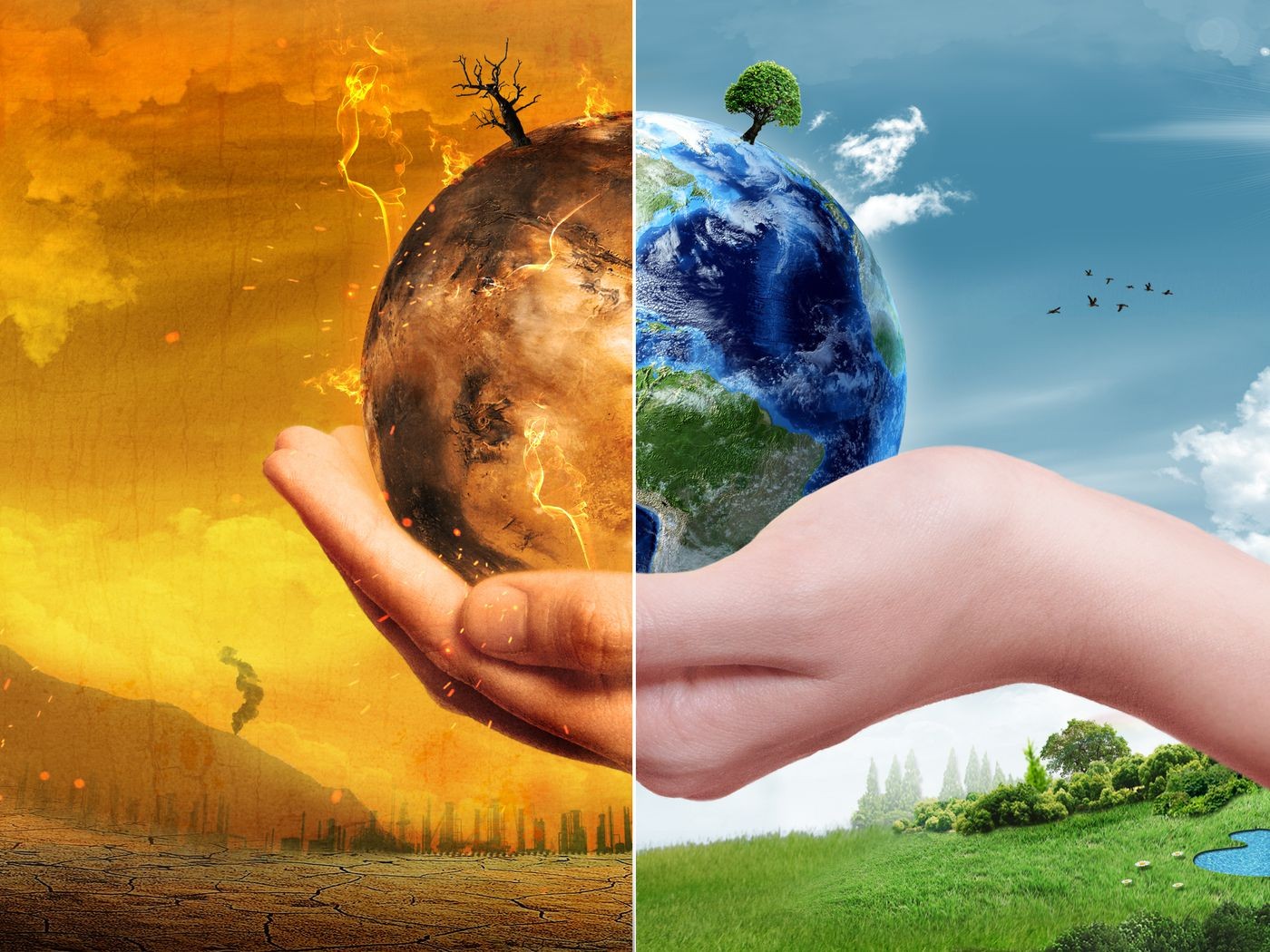The continuous rise in the temperature of the planet is upsetting. The root cause for this is global warming. Global warming begins when sunlight reaches the Earth. The clouds, atmospheric particles, reflective ground surfaces, and surface of oceans then send about 30 % of sunlight back into the space, whilst the remaining is absorbed by oceans, air, and land. This consequently heats up the surface of the planet and atmosphere, making life feasible. As the Earth warms up, this solar energy is radiated by thermal radiation and infrared rays, propagating directly out to space thereby cooling the Earth. However, some of the outgoing radiation is re-absorbed by carbon dioxide, water vapours, ozone, methane, and other gases in the atmosphere and is radiated back to the surface of Earth. These gases are commonly known as greenhouse gases due to their heat-trapping capacity. It must be noted that this re-absorption process is actually good as the Earth’s average surface temperature would be very cold if there was no existence of greenhouse gases. The dilemma began when the concentration of greenhouse gases in the atmosphere was artificially increased by humankind at an alarming rate over the past two centuries. As of 2004, over 8 billion tons of carbon dioxide were pumped thermal radiation is further hindered by increased levels of greenhouse gases resulting in a phenomenon known as human enhanced global warming effect. Recent observations regarding global warming have substantiated the theory that it is indeed a human-enhanced greenhouse effect that is causing the planet to heat up. The planet has experienced the largest increase in surface temperature over the last 100 years.
Causes
The major cause of global warming is greenhouse gases. They include carbon dioxide, methane, nitrous oxides, and in some cases chlorine and bromine-containing compounds. The build-up of these gases in the atmosphere changes the radioactive equilibrium in the atmosphere. Their overall effect is to warm the Earth’s surface and the lower atmosphere because greenhouse gases absorb some of the outgoing radiation of Earth and re-radiate it back towards the surface. The net warming from 1850 to the end of the 20th century was equivalent to nearly 2.5 W/m 2 with carbon dioxide contributing about 60 % to this figure, methane about 25 percent, with nitrous oxides and halocarbons providing the remainder. In 1985, Joe Farman, of the British Antarctic Survey, published an article showing the decrease in ozone levels over Antarctica during the early 1980s. The response was striking: large-scale international scientific programs were mounted to prove that CFCs (used as aerosol propellants in industrial cleaning fluids and in refrigeration tools) were the cause of the problem. Even more important was abrupt international action to curb the emissions of CFCs.The second major cause of global warming is the depletion of the ozone layer. This happens mainly due to the presence of chlorine-containing source gases. When ultraviolet light is present, these gases dissociate releasing chlorine atoms which then catalyze ozone destruction. Aerosols present in the atmosphere are also causing global warming by changing the climate in two different ways.
Firstly, they scatter and absorb solar and infrared radiation, and secondly, they may alter the microphysical and chemical properties of clouds and perhaps affect their lifetime and extent. The scattering of solar radiation acts to cool the planet, while absorption of solar radiation by aerosols warms the air directly instead of permitting sunlight to be absorbed by the surface of the Earth. The human contribution to the number of aerosols in the atmosphere is of various forms. For instance, dust is a by-product of agriculture. Biomass burning generates a mixture of organic droplets and soot particles. Many industrial processes produce a wide diversity of aerosols depending on what is being burned or generated in the manufacturing process. Moreover, exhaust emissions from various sorts of transport produce a rich mixture of pollutants that are either aerosols from the outset or are transformed by chemical reactions in the atmosphere to form aerosols.

